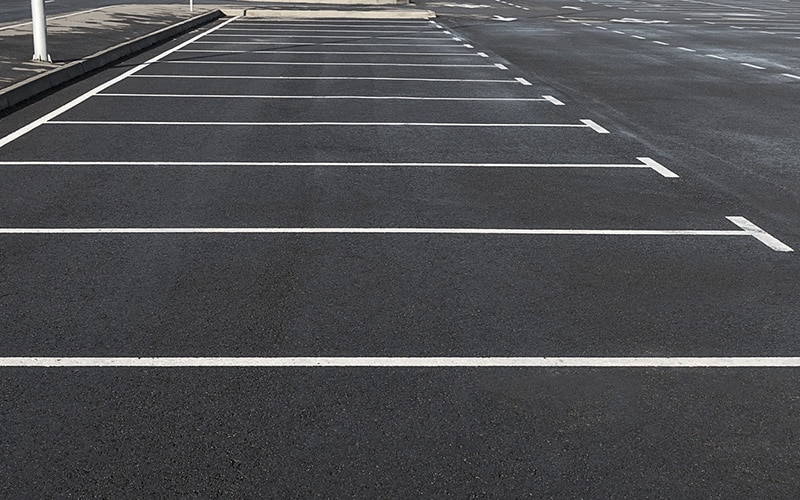Boost Security and Appeal: Angled Parking Area Solutions with Asphalt Sealing
Warm Mix Asphalt: A Lasting Remedy for Pavement
Warm Mix Asphalt (HMA) has actually arised as a leading sustainable option for sidewalk options, providing a myriad of environmental advantages and cutting-edge innovations. As the demand for green building and construction practices expands, discovering the nuances of HMA's sustainability can supply important understandings right into the future of pavement solutions.
Ecological Advantages of Warm Mix Asphalt

Additionally, Hot Mix Asphalt helps to alleviate city warmth island impacts. Its dark shade soaks up sunlight, lowering the amount of warmth reflected back right into the environment compared to lighter-colored sidewalks. This can reduce ambient temperatures in urban areas, decreasing the need for cooling and ultimately reducing energy usage.
Additionally, Hot Mix Asphalt adds to enhanced stormwater management. Its porous nature enables water to recharge and infiltrate the sidewalk groundwater products, minimizing runoff and the threat of flooding. These ecological benefits make Warm Mix Asphalt a sustainable option for leading highways and roads.
Power Effectiveness in HMA Production
Is energy efficiency a vital variable in the manufacturing of Warm Mix Asphalt (HMA)? Power plays a substantial function in the production of HMA, influencing both expense and environmental sustainability. One key facet of power effectiveness in HMA production is the use of cozy mix asphalt (WMA) innovations.
Furthermore, developments in plant technologies have actually brought about more energy-efficient HMA manufacturing procedures. Modern plants are designed with attributes like recycled asphalt pavement (RAP) handling abilities, efficient heater systems, and boosted insulation, all adding to power financial savings. By maximizing energy usage in HMA manufacturing, the sector can reduce its carbon impact while maintaining top quality pavement materials. Energy effectiveness is, consequently, an important factor to consider in guaranteeing the sustainability of Hot Mix Asphalt manufacturing.
Recyclability of Hot Mix Asphalt
The recyclability of Hot Mix Asphalt (HMA) is a critical facet of its sustainability and long-term environmental effect. HMA is just one of the most recycled products in the USA, with over 100 million lots of recovered asphalt sidewalk (RAP) being reused annually in new pavement construction. Recycling HMA supplies several ecological advantages, such as lowering the need for virgin materials, reducing energy usage during manufacturing, and decreasing the quantity of waste sent out to land fills.
The process of reusing HMA includes grating the existing sidewalk, crushing it right official website into smaller sized items, and mixing it with brand-new accumulation and asphalt binder to develop a recycled mix. In general, the recyclability of HMA plays a significant role in advertising sustainable techniques within the pavement industry.

Long-Term Efficiency of HMA
Asphalt pavements demonstrate sturdiness and strength over an extended period, mirroring the long-lasting performance of Hot Mix Asphalt (HMA) The long life of HMA can be credited to its ability to hold up against heavy website traffic loads, extreme weather problems, and the effects of aging. Researches check these guys out have shown that well-designed and properly constructed HMA pavements can last for twenty years or even more with normal upkeep. The trick to making the most of the lasting efficiency of HMA exists in utilizing top quality materials, adhering to finest practices in building and construction, and applying effective upkeep strategies. Proper drainage, routine assessments, and prompt repair services are crucial for preserving the architectural honesty of HMA sidewalks with time. Additionally, developments in HMA modern technology, such as the usage of polymer-modified binders and warm mix asphalt, have better enhanced the toughness and durability of HMA pavements. By focusing on high quality construction and upkeep techniques, HMA remains to show itself as a lasting and cost-effective solution for durable sidewalk facilities.

HMA: Resilience and Sustainability
Demonstrating both toughness and sustainability, Hot Mix Asphalt (HMA) has come to be a foundation in the building and construction of long-lasting sidewalk frameworks - regrading. HMA's toughness comes from its capacity to hold up against heavy tons, harsh weather condition conditions, and high website traffic volumes, making it a reliable choice for roadways, highways, and more info here flight terminal paths. The structure of HMA, which usually includes accumulations, binder, and filler, plays a crucial function in enhancing its long life and resistance to tear and use
In addition, HMA's sustainability hinges on its recyclability and energy-efficient production procedure. The capacity to recycle reclaimed asphalt sidewalk (RAP) in new HMA blends decreases the need for virgin materials and reduces the ecological impact of sidewalk construction and upkeep. In addition, the energy efficiency of creating HMA lies in its lower mixing temperatures contrasted to other sidewalk materials, leading to lowered power intake and greenhouse gas discharges.
Verdict
In final thought, warm mix asphalt (HMA) uses a sustainable option for pavement with its environmentally pleasant features. HMA's recyclability, energy performance in manufacturing, and long-lasting toughness make it an environment-friendly selection for road building and construction.
HMA is one of the most recycled products in the United States, with over 100 million heaps of recovered asphalt pavement (RAP) being reused each year in new sidewalk building and construction.The process of reusing HMA entails grating the existing sidewalk, squashing it into smaller pieces, and blending it with new aggregate and asphalt binder to produce a recycled mix.Asphalt sidewalks show sturdiness and resilience over an extensive duration, mirroring the long-term efficiency of Hot Mix Asphalt (HMA) Additionally, advancements in HMA technology, such as the use of polymer-modified binders and cozy mix asphalt, have actually additionally boosted the durability and durability of HMA pavements. The capacity to reuse redeemed asphalt sidewalk (RAP) in new HMA combinations decreases the demand for virgin products and reduces the environmental effect of pavement building and construction and maintenance.